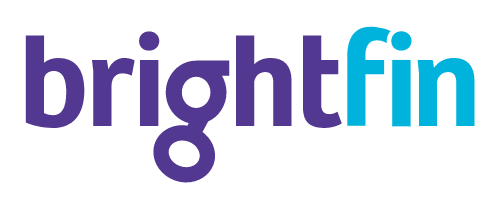Description

Abacus

Spenza
Comprehensive Overview: Abacus vs Spenza
Below is a comprehensive overview of the three financial platforms: Abacus, Spenza, and Volopay, covering their primary functions, target markets, market share, user base, and key differentiating factors.
Abacus
a) Primary Functions and Target Markets
- Primary Functions: Abacus is primarily a real-time expense management and reporting platform designed to streamline the expense reporting process for businesses. It provides features like automated expense reporting, corporate card reconciliation, direct deposit reimbursements, approval workflows, policy enforcement, receipt matching, and integration with accounting software. The platform aims at increasing efficiency and accuracy in managing corporate expenses.
- Target Markets: Abacus is aimed at small to medium-sized enterprises (SMEs) and mid-market companies that require robust expense management solutions to improve their financial operations.
b) Market Share and User Base
- Market Share: Abacus holds a niche market presence, particularly popular among companies looking for intuitive and easy-to-deploy expense management systems.
- User Base: The user base includes a diverse range of businesses from various industries, primarily within the United States. The number of users is moderate compared to larger financial management platforms.
c) Key Differentiating Factors
- Real-Time Expense Reporting: Unlike many traditional expense reporting systems, Abacus focuses on real-time data capture and reporting, which helps in immediate expense tracking and decision-making.
- User-Friendly Interface: Known for its simple and intuitive UI, it minimizes the learning curve for users.
- Robust Integration Capabilities: It offers seamless integrations with popular accounting software and other business tools.
Spenza
a) Primary Functions and Target Markets
- Primary Functions: Spenza provides an all-in-one platform for telecom expense management, cloud expense management, and SaaS subscription management. It focuses on helping businesses track, manage, and optimize their telecom and cloud expenses with features like contract management, usage analytics, and vendor management.
- Target Markets: The platform targets medium to large enterprises that need comprehensive solutions for managing their telecom and cloud infrastructure expenses, particularly those in tech-driven industries with complex IT needs.
b) Market Share and User Base
- Market Share: As a specialized platform, Spenza occupies a smaller segment of the overall expense management market but is recognized for its niche capabilities.
- User Base: Its user base mainly includes enterprises with significant telecom and IT expenditures that require specialized tools for detailed expense management and cost optimization.
c) Key Differentiating Factors
- Focus on Telecom and Cloud Management: Unlike broader expense management tools, Spenza specifically targets telecom and cloud services, providing detailed insights and analytics.
- Advanced Vendor Management: The platform offers robust capabilities for managing and negotiating with multiple vendors, critical for businesses with diverse IT and telecom setups.
- Comprehensive Usage Analytics: It offers detailed usage analytics to help businesses optimize their spending and reduce waste.
Volopay
a) Primary Functions and Target Markets
- Primary Functions: Volopay is an all-in-one business finance and expense management platform that provides corporate cards, automated expense reporting, bill payments, and integrated accounting solutions. It helps companies streamline their financial operations by offering tools for expense tracking, control, and reconciliation.
- Target Markets: Their target market comprises SMEs and startups, particularly in the Asia-Pacific region, looking for modern solutions to manage their financial processes more efficiently.
b) Market Share and User Base
- Market Share: Volopay is a growing player in the fintech space, particularly strong in the Asia-Pacific regions with a rapidly expanding user base among tech-savvy SMEs and startups.
- User Base: The user base mostly includes startups and medium-sized businesses that are early adopters of technology and digital solutions to streamline operations.
c) Key Differentiating Factors
- Comprehensive Financial Ecosystem: Volopay offers a broader suite of financial tools compared to some competitors, integrating expense management with corporate cards and vendor payments.
- Focus on Asia-Pacific Region: It has tailored its offerings to meet the specific needs and challenges of businesses in the Asia-Pacific region, which remains a distinctive competitive advantage.
- Innovative Technology Use: The platform employs advanced technology like AI for automated processes and real-time analytics, appealing to tech-driven companies.
Comparative Summary
- Focus Areas: Abacus excels in real-time expense management, Spenza specializes in telecom and cloud expense optimization, and Volopay offers a broader financial management ecosystem for SMEs.
- Target Market Size and Scope: Abacus and Volopay target SMEs and mid-sized companies, while Spenza is tailored for larger enterprises with specific telecom and cloud needs.
- Regional Presence: Volopay has a stronger presence in Asia-Pacific, Abacus in the US, while Spenza serves global enterprises with a focus on IT-related expenses.
- Key Features: Abacus stands out for its real-time insights, Spenza for its telecom/cloud management, and Volopay for its comprehensive range of fintech solutions.
Each of these platforms offers unique benefits and is designed to cater to distinct aspects of business financial management, addressing various market needs in innovative ways.
Contact Info

Year founded :
2021
Not Available
Not Available
Not Available
Not Available

Year founded :
Not Available
Not Available
Not Available
Not Available
http://www.linkedin.com/company/isimplexity
Feature Similarity Breakdown: Abacus, Spenza
When comparing financial management tools like Abacus, Spenza, and Volopay, it's important to consider their core features, user interfaces, and any unique attributes each tool might offer. Here's a breakdown:
a) Core Features in Common:
-
Expense Tracking: All three platforms offer systems to track employee expenses in real-time, which helps companies manage, verify, and reimburse expenses efficiently.
-
Automated Reporting: Each platform provides automation in generating expense reports, helping streamline the approval process and reduce manual paperwork.
-
Integration Capabilities: They support integrations with other financial software, like accounting systems (e.g., QuickBooks, Xero), to ensure seamless synchronization of data.
-
Corporate Cards: They offer the facility of issuing corporate cards to employees, allowing for controlled spending and easy tracking of company-related expenses.
-
Budget Management: Tools to manage and track budgets against actual expenses, helping organizations control financial leakage and maintain financial discipline.
b) User Interface Comparison:
-
Abacus: Known for its user-friendly and intuitive design. It emphasizes simplicity, with easy navigation for both employees submitting expenses and managers approving them. The dashboard is clean, with clear insights and quick access to reports and analytics.
-
Spenza: Spenza provides a modern interface with customizable dashboards. It focuses on easy use for both financial professionals and regular employees. The UI is designed to make complex tasks manageable with minimal training.
-
Volopay: Volopay’s interface is sleek and modern, with a major focus on user experience. It offers clear visuals and accessible functionality, ideal for startups and SMEs looking for an agile solution. The dashboard provides real-time updates and easy navigation.
c) Unique Features:
-
Abacus: One of its standout features is real-time expense reporting. Abacus focuses heavily on automating expense approvals, providing a system that learns and suggests the best approval paths based on previous actions. This can greatly reduce the time spent on manual approvals.
-
Spenza: Offers advanced telecommunications expense management capabilities, which might be beneficial for companies with significant telecom expenditures or those that need to manage expenses related to SaaS usage and subscriptions.
-
Volopay: Volopay stands out with its global currency support which is particularly beneficial for companies with international operations. It also offers features like bill payments and vendor management, integrating wider financial operations into one platform.
Each platform has its strength, and choosing between them would depend on the specific needs of a business, such as ease of use, specific feature requirements, and budget considerations.
Features

Integration
Expense Management
Security
User Management

Subscription Management
Expense Optimization
Integration and Compatibility
Security and Compliance
User Support
Best Fit Use Cases: Abacus, Spenza
Here's a detailed overview of the best fit use cases for Abacus, Spenza, and Volopay:
Abacus
a) Ideal Use Cases:
- Expense Management for Medium to Large Enterprises: Abacus is particularly well-suited for businesses with complex and high-volume expense management needs. Companies that require robust, automated expense reporting and approval workflows will benefit greatly from Abacus.
- Real-time Expense Tracking: Businesses that prioritize real-time financial data and analytics can leverage Abacus for its ability to provide immediate insights into spending patterns.
d) Industry Vertical & Company Size:
- Corporate and Enterprise Clients: Abacus excels in environments where there are multiple departments and numerous expense reports, typical in larger organizations.
- Professional Services and Consultancy Firms: Industries with frequent travel and client meetings, such as consulting and professional services, will find Abacus’s real-time expense reporting particularly useful.
Spenza
b) Preferred Scenarios:
- Telecom Expense Management: Spenza is optimal for organizations that need detailed control over telecom expenses, offering a platform to manage and optimize telecom-related costs effectively.
- Companies with Complex IT and Telecom Needs: Enterprises that manage multiple cloud providers, SaaS subscriptions, and telecom services will find Spenza’s capabilities in monitoring and optimizing technology expenses beneficial.
d) Industry Vertical & Company Size:
- Technology and Telecom Industries: Industries heavily reliant on IT and telecommunication services are ideal for Spenza, as it provides in-depth visibility and management of such expenses.
- Mid-sized to Large Businesses: Spenza is typically more beneficial for businesses with considerable telecom and technology expenditure rather than small businesses with minimal telecom needs.
Volopay
c) Consideration for Use:
- Startups and Growing Businesses: Volopay is an excellent choice for startups and SMEs that need a flexible and comprehensive financial management platform that includes features such as corporate cards, bill payments, and expense management.
- Companies Seeking an Integrated Financial Platform: Companies looking to consolidate various aspects of financial management (expenses, payments, credit) into one seamless platform should consider Volopay.
d) Industry Vertical & Company Size:
- Startups and Small to Medium Enterprises (SMEs): Volopay targets smaller and growing businesses with its all-inclusive financial management features, making it easier for such companies to scale financially.
- Remote or Distributed Teams: Companies with dispersed teams will benefit from Volopay’s use of virtual cards and its capacity to manage team expenses seamlessly.
Conclusion:
- Abacus excels in detailed expense management for larger organizations requiring real-time analytics.
- Spenza is best for companies with substantial telecom and IT expenses looking to optimize their spend.
- Volopay provides an all-in-one financial management solution suitable for startups and SMEs, combining the benefits of corporate cards, expense management, and more in a user-friendly platform.
Each product offers unique strengths, aligning with different business needs and industry requirements, enabling companies to choose based on their specific operational and organizational priorities.
Pricing

Pricing Not Available

Pricing Not Available
Metrics History
Metrics History
Comparing undefined across companies
Conclusion & Final Verdict: Abacus vs Spenza
Conclusion and Final Verdict for Abacus, Spenza, and Volopay
When evaluating Abacus, Spenza, and Volopay, it's important to consider various factors such as pricing, features, scalability, customer support, and user experience. Each platform has its strengths and weaknesses, appealing to different business needs and priorities.
a) Best Overall Value
Volopay offers the best overall value. It combines a comprehensive suite of financial management tools, competitive pricing, and excellent user experience. Its scalability makes it ideal for businesses looking to grow, while its features cater to the needs of small to medium enterprises as well as larger organizations.
b) Pros and Cons
Abacus
- Pros:
- Great for businesses that prioritize automated expense reporting and real-time expense tracking.
- Streamlined reimbursement process.
- User-friendly interface.
- Cons:
- Limited in terms of financial management features compared to Volopay.
- May not scale well for larger organizations with more complex financial needs.
Spenza
- Pros:
- Offers robust spend management solutions tailored to enterprise-level clients.
- Strong reporting and analytics features.
- Flexible integration with various financial systems.
- Cons:
- Higher learning curve compared to others.
- Could be overkill for smaller businesses looking for simplicity.
Volopay
- Pros:
- Comprehensive financial management tools, including corporate cards, bill payments, and expense tracking.
- Scalable to accommodate business growth.
- Excellent customer support and user-friendly design.
- Cons:
- Features might be too extensive for very small businesses or startups with minimal needs.
- May require some time to get accustomed to the breadth of tools available.
c) Recommendations for Users
-
Small Businesses and Startups:
- If you are a small business or startup mainly looking for an intuitive expense tracking system, you might find Abacus to be the most straightforward and cost-effective.
-
Enterprise-Level Companies:
- Larger organizations with complex spend management requirements might benefit most from Spenza's robust features and analytics, provided they have the resources to implement and manage the system.
-
Growing Businesses:
- For businesses that are scaling and need a versatile financial management platform, Volopay provides comprehensive features and scalability. It's a strong choice if you anticipate more complex financial management needs as your company expands.
In conclusion, the choice between these platforms should be predicated on your specific needs, size, and financial management goals. While Volopay presents the best overall value for comprehensive needs, Abacus and Spenza serve niche requirements effectively for smaller businesses and enterprise-level companies, respectively. Consider a trial or demo to better understand how each aligns with your specific business needs.
Add to compare
Add similar companies



